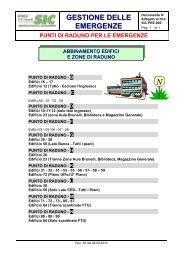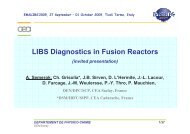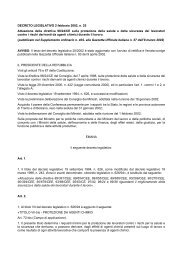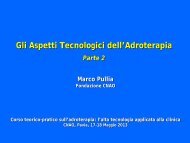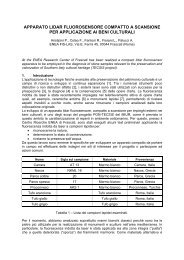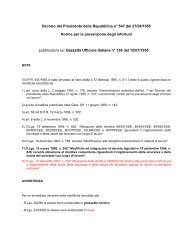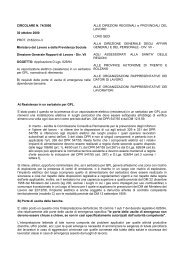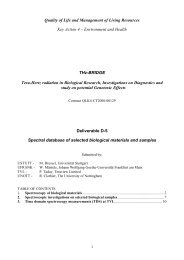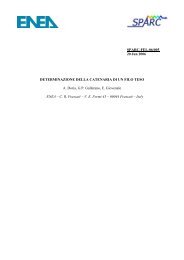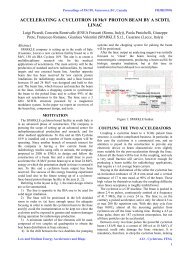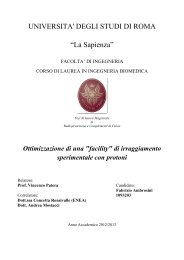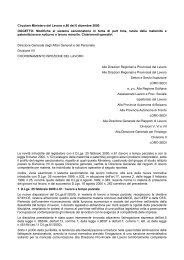Theory, Design and Tests on a Prototype Module of a Compact ...
Theory, Design and Tests on a Prototype Module of a Compact ...
Theory, Design and Tests on a Prototype Module of a Compact ...
Create successful ePaper yourself
Turn your PDF publications into a flip-book with our unique Google optimized e-Paper software.
8 2. LINAC AND SCL ACCELERATORS<br />
parameters involved; also a short review <strong>on</strong> LIBO particles dynamic<br />
<str<strong>on</strong>g>and</str<strong>on</strong>g> <strong>on</strong> mechanical aspects is presented.<br />
1. Fundamental definiti<strong>on</strong>s<br />
To accelerate particles we use an electric field; this properties is<br />
represented through the Lorentz Force equati<strong>on</strong><br />
F = q( E + v × B)<br />
which gives the force acting <strong>on</strong> a point charge q in the presence <strong>of</strong><br />
electromagnetic field.<br />
The first idea to have particles accelerated by a l<strong>on</strong>gitudinal electric<br />
field is to use a circular waveguide operating in the mode T M01, but<br />
in this case the phase velocity <strong>of</strong> the field is greater than the velocity<br />
<strong>of</strong> light <str<strong>on</strong>g>and</str<strong>on</strong>g> the particles would never have synchr<strong>on</strong>ism with the<br />
electromagnetic wave, <str<strong>on</strong>g>and</str<strong>on</strong>g> therefore no c<strong>on</strong>tinuous accelerati<strong>on</strong>.<br />
Then, we need to lower the phase velocity. One way could be to<br />
charge the waveguide with equally spaced disks, let us call L the distance<br />
between disks. The study <strong>of</strong> such a structure is based <strong>on</strong> two<br />
fundamental points:<br />
• Floquet’s Theorem: In a lossless spatial periodic structure, the<br />
wave functi<strong>on</strong> is periodic too <str<strong>on</strong>g>and</str<strong>on</strong>g> it may differ from a period<br />
to the next <strong>on</strong>ly by a factor like e −jkL .<br />
• The boundary c<strong>on</strong>diti<strong>on</strong>s cannot be satisfied by a single mode<br />
<strong>of</strong> the structure <str<strong>on</strong>g>and</str<strong>on</strong>g> there is a c<strong>on</strong>tinuous spectrum <strong>of</strong> space<br />
harm<strong>on</strong>ics (Fourier series).<br />
Figure 2.1. Dispersi<strong>on</strong> diagram <strong>of</strong> a periodic structure<br />
(loaded waveguide); unloaded cavity case is shown for<br />
comparis<strong>on</strong>.<br />
Interesting features are observable in figure 2.1, which shows the<br />
dispersi<strong>on</strong> diagram <strong>of</strong> an infinite periodic structure <str<strong>on</strong>g>and</str<strong>on</strong>g>, for comparis<strong>on</strong>,<br />
the diagram <strong>of</strong> an infinite wide waveguide:<br />
• There is a limited passb<str<strong>on</strong>g>and</str<strong>on</strong>g> effect between ωc <str<strong>on</strong>g>and</str<strong>on</strong>g> ωπ. The<br />
frequency range <strong>of</strong> passb<str<strong>on</strong>g>and</str<strong>on</strong>g> is related to the coupling between<br />
cavities.



